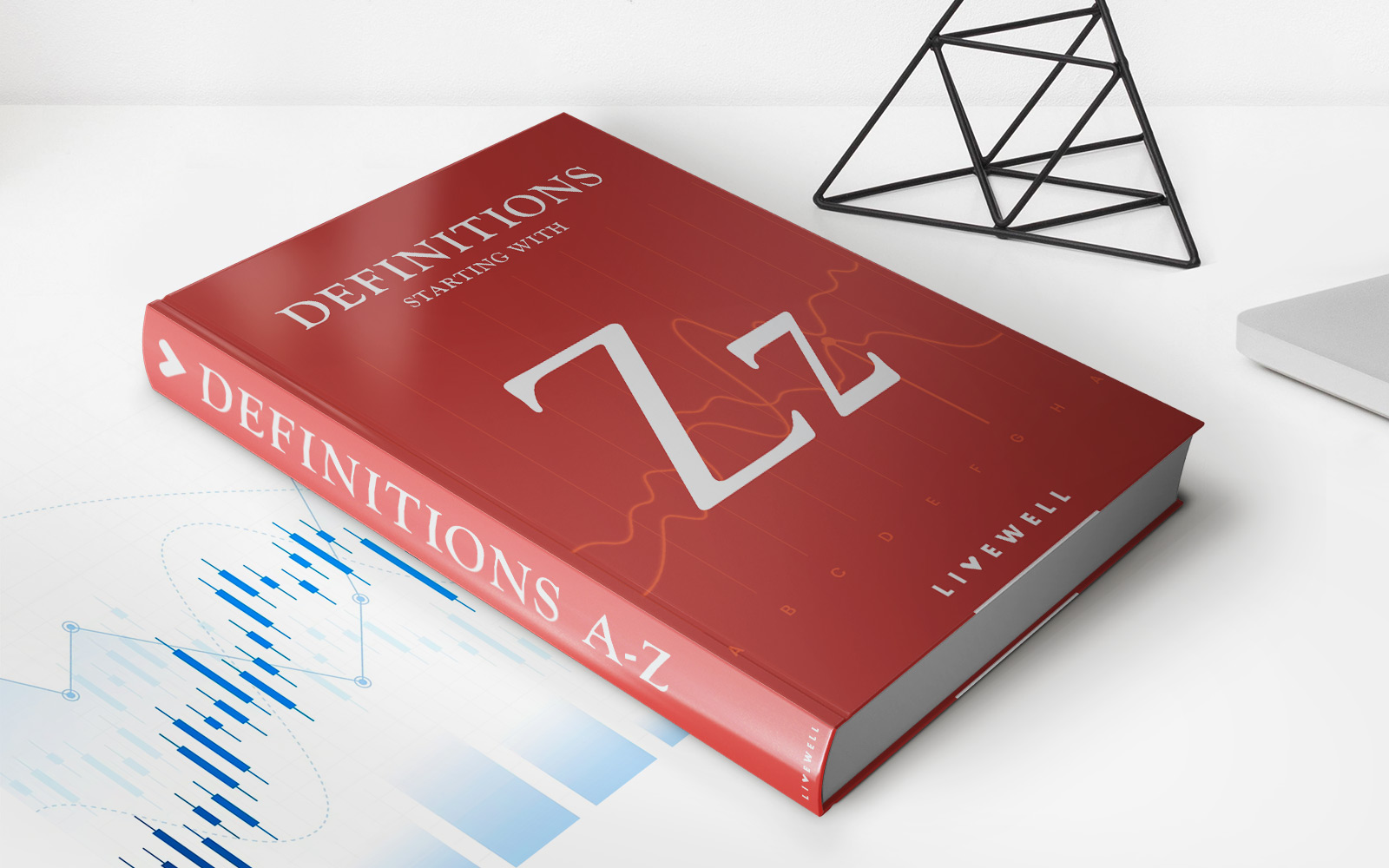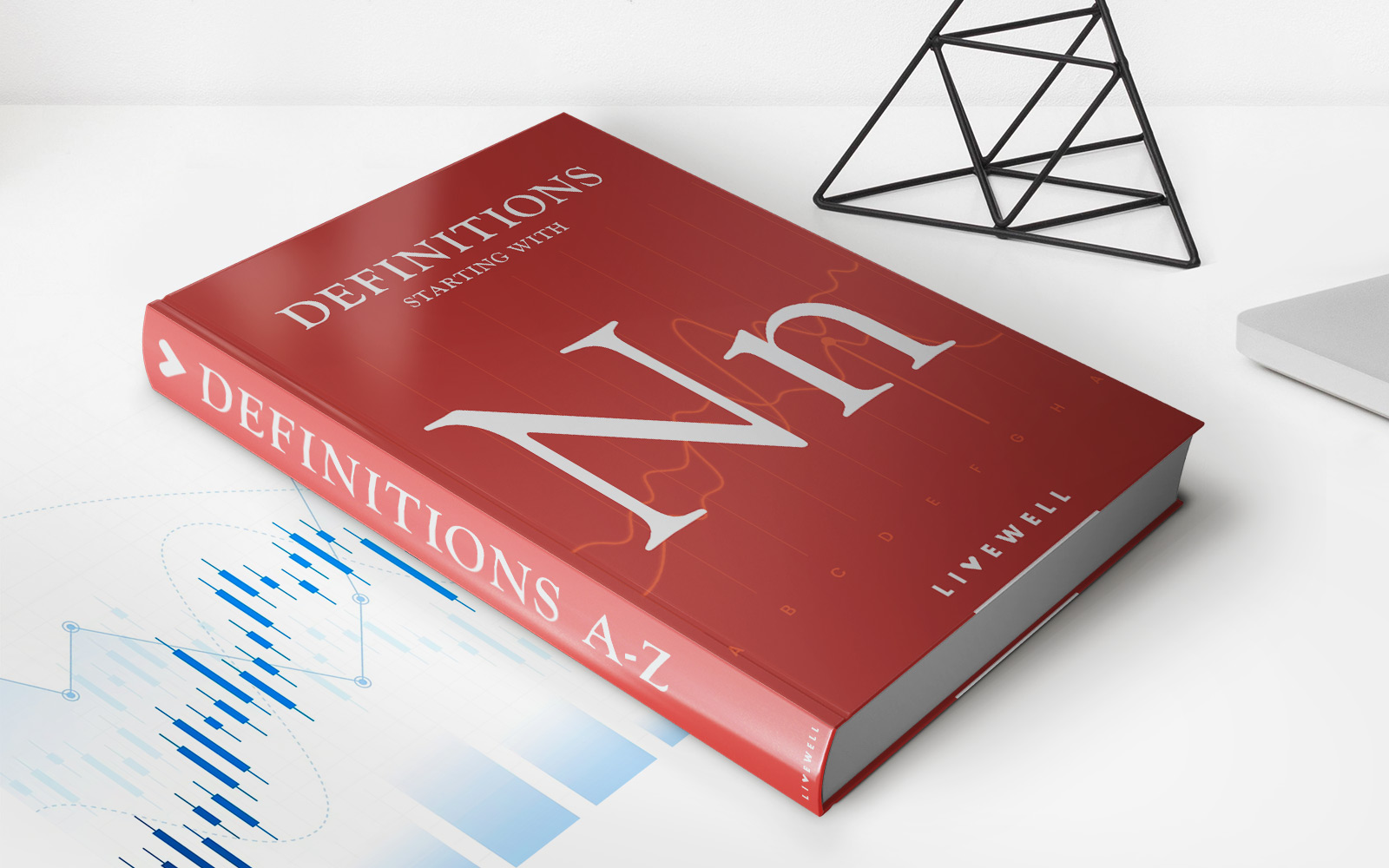

Finance
How Much Does 401K Cost Employers
Published: October 17, 2023
Discover the cost of employing a 401K retirement plan and its impact on employer finances.
(Many of the links in this article redirect to a specific reviewed product. Your purchase of these products through affiliate links helps to generate commission for LiveWell, at no extra cost. Learn more)
Table of Contents
Introduction
Welcome to the world of 401k plans, where employees can save for their retirement and employers can attract and retain top talent. If you’re an employer considering offering a 401k plan to your workforce, it’s essential to understand the costs associated with this popular retirement savings option.
A 401k plan is a type of employer-sponsored retirement plan that allows employees to contribute a portion of their salary on a pre-tax basis. These contributions, along with any potential employer matching or profit-sharing contributions, can be invested in a range of investment options such as stocks, bonds, and mutual funds. The funds grow tax-deferred until retirement, at which point they can be withdrawn, typically subject to income tax.
While offering a 401k plan can provide numerous benefits for both employers and employees, it’s important to recognize that there are costs involved in setting up and maintaining the plan. These costs can vary depending on various factors, including the size of the company, the plan design, and the services provided by third-party administrators or investment providers.
In this article, we will explore the different costs associated with offering a 401k plan, both direct and indirect. We will also discuss employer contributions and matching, as well as the tax benefits that employers can enjoy by providing this retirement savings option. By the end, you will have a clearer understanding of how much it can cost employers to offer a 401k plan and the value it can bring to your business.
Understanding 401K Plans
Before diving into the costs associated with offering a 401k plan, it’s important to have a solid understanding of how these plans work. A 401k plan is a defined contribution retirement plan that allows employees to save for retirement through payroll deductions. The name “401k” comes from the section of the U.S. Internal Revenue Code that governs these plans.
One of the key features of a 401k plan is the ability for employees to contribute a portion of their salary on a pre-tax basis. This means that the amount they contribute is deducted from their paycheck before taxes are taken out, resulting in a lower taxable income. It’s important to note that there are annual contribution limits set by the Internal Revenue Service (IRS), which can vary from year to year.
Another significant advantage of a 401k plan is the potential for employer contributions. Many employers choose to offer a matching contribution, where they match a certain percentage of their employees’ contributions, up to a specified limit. For example, an employer might offer a 50% match on employee contributions, up to 5% of their salary. This matching contribution can be a powerful incentive for employees to participate in the plan and save for retirement.
Once employees contribute to their 401k plan, the funds can be invested in a selection of investment options. These options typically include stocks, bonds, mutual funds, and sometimes even company stock. Employees can choose their desired investment allocation based on their risk tolerance and retirement goals.
While employees have control over their individual 401k accounts, the overall plan is usually managed by a designated plan administrator or investment provider. This administrator handles the administrative tasks of the plan, such as recordkeeping, compliance with regulatory requirements, and ensuring that employee contributions and investment gains or losses are accurately tracked.
Understanding the basics of a 401k plan is crucial for both employers and employees. Employers can leverage this knowledge to design a plan that suits their business needs and budget, while employees can make informed decisions about their retirement savings. Now that we have a foundation of understanding, let’s explore the costs associated with offering a 401k plan.
Costs Associated with Offering 401K Plans
Offering a 401k plan to your employees comes with certain costs that employers need to consider. These costs can be broadly categorized into direct costs and indirect costs. Direct costs are the fees or expenses that are directly associated with the administration, recordkeeping, and management of the plan. Indirect costs, on the other hand, are more indirect or hidden costs that are associated with offering the plan.
Let’s delve into each of these cost categories in more detail:
Direct Costs of 401k Plans
Direct costs include the fees and expenses charged by third-party administrators or investment providers for managing the administrative tasks of the plan. These costs can vary depending on the size of the company, the complexity of the plan design, and the services provided by the administrator or provider.
Typical direct costs associated with 401k plans may include:
- Setup Fees: These are one-time fees charged for establishing the plan.
- Annual Recordkeeping Fees: These fees cover the cost of maintaining accurate records of employee contributions, investment allocations, and other plan-related information.
- Investment Fees: If the plan offers a range of investment options, there may be fees associated with managing and maintaining these investments.
- Custodial Fees: If the plan uses a custodian to hold the assets, there may be fees associated with safeguarding and administering the plan assets.
- Compliance Fees: These fees cover the cost of ensuring the plan remains compliant with the regulations set forth by the IRS and the Department of Labor.
It’s important to carefully review and assess these direct costs when selecting a plan administrator or investment provider. Comparing fees and services from different providers can help ensure you are getting the best value for your money.
Indirect Costs of 401k Plans
Indirect costs, while not as visible as direct costs, can still have an impact on employers offering a 401k plan. These costs include:
- Administrative Burden: Offering a 401k plan requires time and resources to handle administrative tasks, such as processing employee contributions, monitoring compliance, and responding to employee inquiries.
- Employee Education: Providing education and support to employees about the plan and investment options can be an additional expense for employers.
- Matching Contributions: While employer matching contributions can be seen as a benefit to attract and retain employees, they are a cost that employers incur. However, it’s important to weigh this cost against the potential benefits of increased employee engagement and loyalty.
- Opportunity Cost: Employers also need to consider the opportunity cost of the funds contributed to the plan. These funds could be used for other purposes, such as business expansion or investment in other employee benefits.
By considering both the direct and indirect costs associated with offering a 401k plan, employers can make an informed decision about whether the benefits outweigh the expenses. Now, let’s take a closer look at the employer contributions and matching.
Direct Costs of 401K Plans
When offering a 401k plan to your employees, there are direct costs that need to be taken into account. These costs are directly associated with the administration, recordkeeping, and management of the plan. It’s essential to understand these direct costs to make informed decisions when selecting a plan administrator or investment provider.
Here are the typical direct costs associated with 401k plans:
- Setup Fees: These are one-time fees charged by the plan administrator or investment provider for establishing the 401k plan. Setup fees can vary depending on the complexity of the plan design and the services included.
- Annual Recordkeeping Fees: These fees cover the cost of maintaining accurate records of employee contributions, investment allocations, and other plan-related information. The annual recordkeeping fees can vary based on the number of plan participants and the complexity of the plan.
- Investment Fees: If the 401k plan offers a variety of investment options, there may be fees associated with managing and maintaining these investments. These investment fees can include expense ratios, management fees, and transaction fees, which are typically charged by the mutual funds or investment options offered through the plan.
- Custodial Fees: Some 401k plans use a custodian to hold the plan’s assets. Custodial fees cover the cost of safeguarding and administering the plan assets. These fees may vary depending on the size of the plan’s assets and the services provided.
- Compliance Fees: Ensuring that the 401k plan remains compliant with the regulations set forth by the Internal Revenue Service (IRS) and the Department of Labor (DOL) comes with compliance fees. These fees cover the cost of performing compliance testing, preparing required annual reports, and ensuring that the plan meets all regulatory requirements.
When evaluating 401k plan providers, it’s crucial to consider not only the fees but also the services provided. A lower fee may not always equate to the best value if the provider lacks necessary services or support.
It’s advisable to gather fee disclosures from potential plan administrators or investment providers and compare them to ensure transparency and understand the full scope of costs. Additionally, consider the reputation, experience, and customer service provided by the providers when making your decision.
Understanding the direct costs associated with 401k plans allows employers to budget effectively and choose a plan administrator or investment provider that aligns with their needs and budget. Now that we have explored the direct costs, let’s move on to discuss the indirect costs associated with offering a 401k plan.
Indirect Costs of 401K Plans
While direct costs are the visible fees and expenses associated with offering a 401k plan, employers should also consider the indirect costs. These costs may not be as immediately apparent but can have an impact on the overall cost of offering the plan. It’s important to take these indirect costs into account when evaluating the feasibility and value of a 401k plan for your business.
Here are some common indirect costs associated with 401k plans:
- Administrative Burden: Offering a 401k plan requires time and resources to handle administrative tasks, such as processing employee contributions, monitoring compliance, and responding to employee inquiries. These administrative tasks can add to the workload of the HR department or require hiring additional staff.
- Employee Education: Providing education and support to employees about the plan and investment options can be an additional expense for employers. This may involve conducting informational meetings, providing educational materials, or engaging the services of a financial advisor to assist employees in making informed investment decisions.
- Matching Contributions: While employer matching contributions can be seen as a benefit to attract and retain employees, they are a cost that employers incur. The cost of matching contributions depends on the matching formula, such as dollar-for-dollar or a percentage of employee contributions, and the maximum employer match limit set by the plan.
- Opportunity Cost: Employers need to consider the opportunity cost of the funds contributed to the 401k plan. These funds could be used for other purposes, such as business expansion or investment in other employee benefits. While providing a 401k plan is a valuable employee benefit, it’s important to weigh the cost against the potential benefits it brings to your business.
It’s crucial to assess these indirect costs in conjunction with the direct costs to determine the overall impact of offering a 401k plan on your business’s finances and resources. Understanding these indirect costs will enable you to make a comprehensive and informed decision about offering the plan to your employees.
Despite the indirect costs, offering a 401k plan can provide several benefits for your business, such as attracting and retaining top talent, enhancing employee satisfaction and loyalty, and potentially reducing taxable income through employer contributions. Evaluating the potential advantages along with the associated costs will help you make the best decision for your company’s financial well-being and the future retirement security of your employees.
Now that we have explored both the direct and indirect costs, let’s delve into the employer contributions and matching aspect of 401k plans.
Employer Contributions and Matching
One of the key features that make 401k plans attractive to employees is the potential for employer contributions and matching. These contributions can incentivize employees to participate in the plan and save for their retirement. As an employer, understanding how employer contributions and matching work is crucial when considering the costs of offering a 401k plan.
Employer Contributions:
Employer contributions are voluntary contributions made by the company to employees’ 401k accounts. These contributions are separate from the employee’s own contributions and can be based on a variety of factors, such as company policy, profitability, or a predetermined formula. Employer contributions are typically a percentage of the employee’s salary or a fixed dollar amount.
Employer contributions can benefit both employers and employees. For employees, it provides an additional source of retirement savings, helping to boost their account balance and increase their overall financial security. For employers, it can serve as a valuable tool to attract and retain top talent, as well as incentivize employees to participate in the plan.
Matching Contributions:
Matching contributions are a specific type of employer contribution wherein the employer matches a portion of the employee’s own contributions to the 401k plan. The matching can be a percentage match, such as 50% or 100% of the employee’s contributions, or a fixed match amount. Typically, there is a maximum percentage or dollar amount that the employer will match.
For example, suppose an employer offers a 50% match on employee contributions up to 5% of their salary. If an employee contributes 5% of their salary to the 401k plan, the employer would match it with an additional 2.5% of the employee’s salary. This matching contribution can vary based on the employer’s policy or plan design.
Matching contributions can significantly motivate employees to save for retirement and maximize their savings potential. It provides a direct financial incentive for employees to contribute to the plan and take advantage of the employer match to grow their retirement savings.
While employer contributions and matching can be seen as an additional cost to employers offering a 401k plan, it’s important to consider the potential benefits. These benefits include attracting and retaining talented employees, increasing employee engagement and loyalty, and potentially benefiting from tax deductions on employer contributions.
Now that we’ve explored employer contributions and matching, let’s move on to discuss the tax benefits that employers can enjoy by providing a 401k plan.
Tax Benefits for Employers
One of the advantages of offering a 401k plan is the potential for tax benefits for employers. The tax advantages can help offset some of the costs associated with providing the plan and make it a more appealing option for businesses. Understanding these tax benefits is crucial when considering the overall cost of offering a 401k plan.
Tax Deductions:
Employer contributions made to a 401k plan are typically tax-deductible for the business. These contributions can be deducted as a business expense, thereby reducing the overall taxable income of the company. The deductible amount is subject to the limits set by the Internal Revenue Service (IRS).
By taking advantage of the tax deduction on employer contributions, businesses can effectively lower their tax liability, potentially resulting in significant savings. This can help offset the direct costs associated with providing the 401k plan to employees.
Tax Credits:
In addition to the potential tax deductions, small businesses may also be eligible for certain tax credits when offering a 401k plan. One such credit is the Small Employer Pension Plan Startup Cost Credit, which provides a tax credit of up to $500 for the first three years of the plan’s existence. This credit is designed to assist small businesses with the costs of establishing the plan.
Another tax credit available to small businesses is the Retirement Plan Startup Costs Tax Credit, which can provide a credit of up to $5,000. This credit is available to businesses with up to 100 employees and covers a portion of the costs associated with starting a new retirement plan, including a 401k plan.
These tax credits can make a significant difference for small businesses, helping to offset the initial costs of implementing a 401k plan and encouraging them to provide this valuable benefit to their employees.
Tax-Deferred Growth:
Another indirect tax benefit for employers offering a 401k plan is the tax-deferred growth of contributions. The funds contributed by employees and any employer matching contributions grow tax-deferred until they are withdrawn at retirement. This means that neither the contributions nor the investment gains are subject to income tax until withdrawal, potentially allowing the funds to grow at a faster rate.
By offering a 401k plan and encouraging employees to save for retirement, employers are promoting long-term savings with the advantage of tax-deferred growth. This can contribute to overall employee financial well-being and help them achieve their retirement goals.
Considering the tax benefits in conjunction with the costs associated with providing a 401k plan allows employers to have a more comprehensive understanding of the potential financial impact. Maximizing tax deductions, taking advantage of tax credits, and promoting tax-deferred growth can help offset the costs and make offering a 401k plan a more attractive option for employers.
Now that we’ve explored the tax benefits for employers, let’s move on to discuss how to determine the total cost of a 401k plan.
Determining the Total Cost of a 401K Plan to Employers
When considering the cost of offering a 401k plan, it’s important for employers to determine the total cost, taking into account both the direct and indirect costs associated with the plan. By understanding and analyzing these costs, employers can make informed decisions about the feasibility and value of offering a 401k plan to their employees.
To determine the total cost of a 401k plan, employers should consider the following factors:
- Direct Costs: Start by calculating the direct costs of the 401k plan, which include setup fees, annual recordkeeping fees, investment fees, custodial fees, and compliance fees. Compare fee disclosures from different plan administrators and investment providers to ensure transparency and value for money.
- Indirect Costs: Evaluate the indirect costs associated with the 401k plan, such as the administrative burden, employee education expenses, matching contributions, and the opportunity cost of funds contributed to the plan. Consider the impact of these costs on your business’s resources, time, and financial objectives.
- Tax Benefits: Factor in the potential tax benefits for employers, such as tax deductions on employer contributions and eligibility for tax credits. Take into account the overall tax savings that can offset the direct and indirect costs of offering the plan.
- Employee Engagement and Retention: Assess the intangible benefits of offering a 401k plan, such as improved employee engagement, loyalty, and retention. Consider the value of attracting and retaining top talent and the potential impact on your business’s long-term success.
- Employee Contribution Rates: Evaluate the expected employee contribution rates to the 401k plan. Higher employee participation and contribution rates can offset some of the costs borne by the employer, making the plan more cost-effective for your business.
By carefully considering these factors, you can estimate the total cost of the 401k plan to your business. It’s important to conduct thorough research, gather information from different plan providers, and consult with financial professionals to obtain accurate cost projections.
Additionally, consider the potential return on investment (ROI) of offering a 401k plan. Look beyond the upfront costs and focus on the long-term benefits, such as increased employee satisfaction, reduced turnover, and the potential for tax savings over time. These factors can enhance the overall value and financial viability of offering a 401k plan to your employees.
Understanding the total cost of a 401k plan allows employers to make informed decisions about its feasibility and value. While there are costs involved, the potential benefits, tax advantages, and positive impact on employee well-being should be taken into consideration when evaluating the overall value of offering a 401k plan.
Now, let’s conclude our exploration of the costs associated with offering a 401k plan.
Conclusion
Offering a 401k plan to your employees can be a valuable employee benefit that helps attract and retain top talent while promoting their long-term financial security. However, it’s essential to understand the costs associated with providing a 401k plan to make informed decisions about its feasibility for your business.
In this article, we explored the different costs associated with offering a 401k plan, including both direct and indirect costs. Direct costs encompassed setup fees, annual recordkeeping fees, investment fees, custodial fees, and compliance fees. Indirect costs included the administrative burden, employee education expenses, matching contributions, and the opportunity cost of funds contributed to the plan.
While these costs are important considerations, it’s also crucial to recognize the potential tax benefits for employers. Tax deductions on employer contributions and eligibility for tax credits can offset some of the costs associated with providing a 401k plan.
Moreover, offering employer contributions and matching can incentivize employees to participate in the plan and boost their retirement savings. These contributions, together with the potential for tax-deferred growth, can provide employees with increased financial security.
When determining the total cost of a 401k plan, it’s vital to consider the direct and indirect costs, tax benefits, employee engagement, and expected employee contribution rates. Evaluating these factors holistically allows you to make an informed decision based on the resources and objectives of your business.
While there are costs associated with providing a 401k plan, it’s important to weigh them against the potential benefits, both tangible and intangible. Improved employee engagement, loyalty, and retention, alongside potential tax savings, can contribute to the long-term success of your business.
In conclusion, offering a 401k plan requires careful consideration of the costs involved. By understanding the financial implications, leveraging the available tax benefits, and assessing the potential return on investment, you can make an informed decision that aligns with your business’s goals and supports the financial well-being of your employees.














